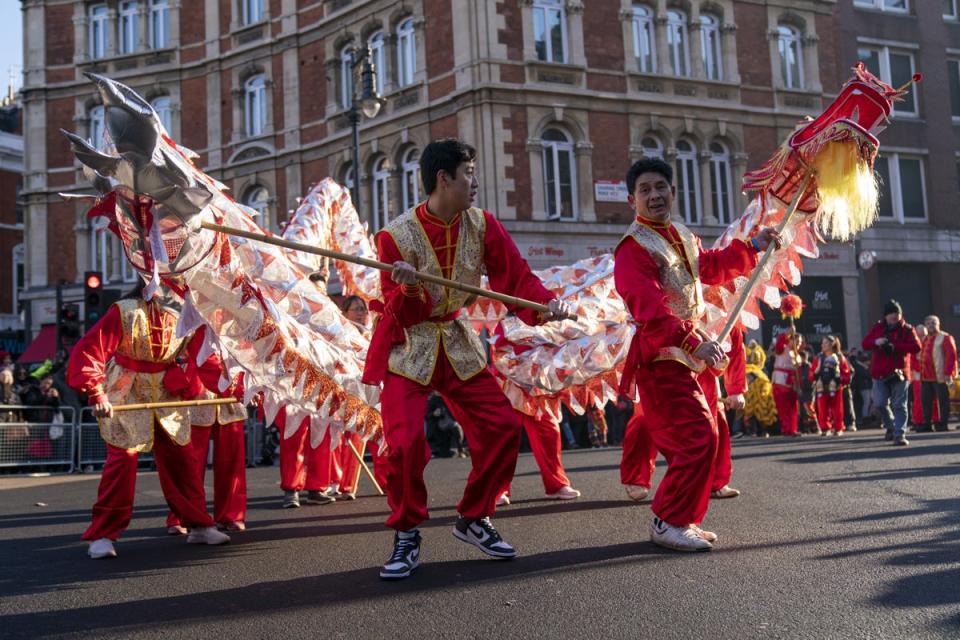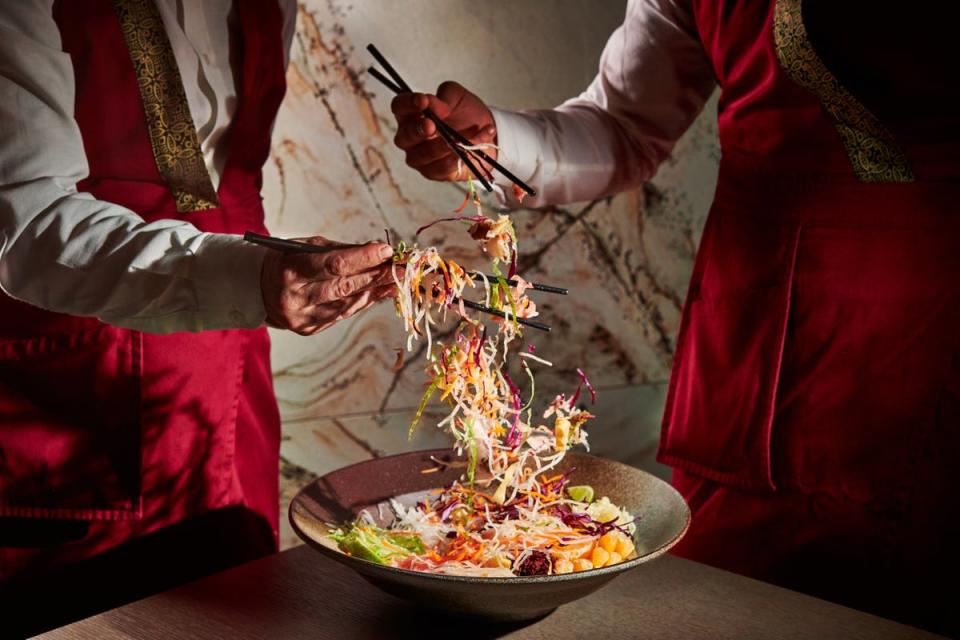On February 10, millions of people around the world will gather to ring in the lunar new year, welcoming the year of the Dragon.
Specifically, 2024 is the year of the Wood Dragon, which is said to bring growth, progress and abundance.
Celebrated throughout China and across east and south-east Asia, the Chinese New Year — referred to in some countries as the Lunar New Year — is the start of the Spring Festival, with celebrations in China and London running until February 24 , the 15th. day of the first month of the lunar new year, when the holiday called the Lantern Festival falls.


Marked by traditional dress, dancing, live performances, a parade and mountains of delicious food, the London festival will see thousands of Londoners and tourists alike gather for one of the biggest New Year celebrations outside of Asia. The capital has been celebrating the event for about 50 years, and Chinatown has always been the center of the action. Here’s everything to expect on the big day.
What is happening?
In addition to restaurants that run Chinese New Year specialties, there is the official Chinese New Year festival, organized by the Chinatown Chinese Association of London. The big parade is part of it, and it takes place after the official holiday, on February 11.
When is the Chinese New Year parade?
The exact times for this year are yet to be confirmed but in previous years, the parade has started at 10am, and the festival will start in Trafalgar Square from 11am. The square will be a hub of lively activity, which usually starts with a screen show, followed by live firecrackers, dance performances and a thanksgiving ceremony, as well as the famous lion’s eye dotting ceremony – a highly symbolic moment that enables the lions ‘see’. Just as the name suggests, the eyes of the lion are drawn or given to pupils. Things usually die down around 6pm, although many people celebrate late into the evening. In total, expect lots of floats, with around 30 groups performing.


Where is the parade in London?
The parade route should start on Duncannon Street, off Trafalgar Square, before heading up Charing Cross Road, turning north onto Shaftesbury Avenue, before plunging into the heart of Chinatown on Rupert Street.
What else is going on?
Throughout the morning and well into the afternoon, there will be plenty of live music, traditional “flying lion” dances and other live performances on stage and screen. Martial artists usually head to Trafalgar Square and there are hoards of street food vendors lining the streets along the parade route and around Chinatown and Leicester Square.
For food, expect Chinese staples typically eaten around this time: dumplings and spring rolls that represent wealth, big bowls of ‘longevity’ noodles – which represent long life and happiness – and sweet rice balls, which traditional that symbolizes the kinship of the family.
Is the event suitable for children and families?
Performances are suitable for all ages, but families looking for entertainment aimed specifically at children should head to Leicester Square, where they’ll find more family-friendly activities, including arts and crafts, calligraphy and opportunities dressed up.
Where to eat
The best Chinatown restaurants in London are likely to be busy, so knowing where to go is key. Around the parade, there are plenty of top choices; Legend of Dumplings (W1, chinatown.co.uk) on Gerrard Street, Gold Mine (W1, goldmine-ward street) on Wardour Street, and Tao Tao Ju (WC2H, taotaoju.co.uk) on Lisle Street is the best for excellent dumplings and dim sum. Food House (W1, 020 7287 2818) and Four seasons (W1, fs-restaurants.co.uk), both on Gerrard Street, are must-visits for exquisite large plates including some exceptional duck.
TPT Coffee (W1, cafetpt.com) also has a well-deserved reputation for their delicious and affordable set menus inspired by Hong Kong cafes. For a slightly less traditional option nearby, the brilliant Luke Farrell Speed Boat Bar on Rupert Street (W1, (speedboatbar.co.uk) inspired by dishes found in Bangkok’s Chinatown, and Bun House on Lisle Street (W1, bun.house) there are some great value Cantonese-inspired buns – the salted egg custard bun can’t be missed.
If you’re not going into Chinatown though, try one of the best restaurants celebrating Chinese New Year around the capital.


What to wear
Because of the festival, many will want to add red to their wardrobe for the day as this is a sign of good luck for the year ahead. Red is also said to represent passion and prosperity, as well as offering financial well-being, particularly relevant at this time of year.
How to get to Chinatown
For anyone brave enough to drive in, there’s a large Q Park in Chinatown itself, as well as one right next to Trafalgar Square. That said, the tube to Charing Cross (Bakerloo, Northern) or Piccadilly Circus (Piccadilly, Bakerloo) is probably best, but remember that these lines will be busy.
The officer continued @TfL on Twitter for real-time service updates and, due to the parade there will also be road closures, so be sure to check before you travel.